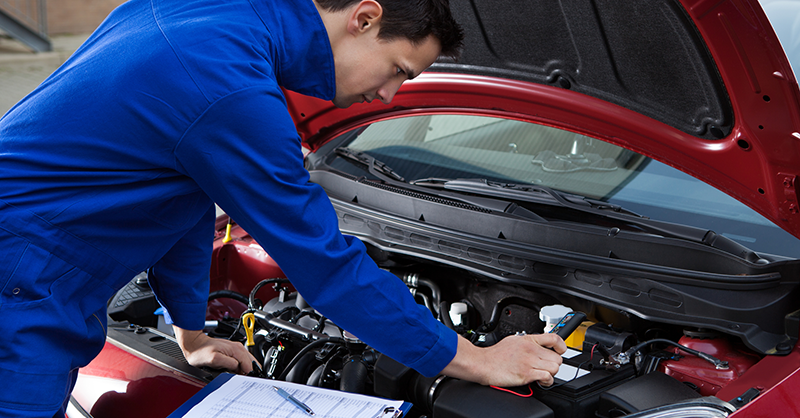Multipoint Inspections Key To Longer Vehicle Life

Your vehicle logged hundreds of miles, if not thousands as you traveled to meet family and friends throughout the holidays.
Now is a great time for a multipoint inspection. Before winter unleashes its full fury, find out the little things that could put your vehicle as risk.
“An inspection focuses on the key systems and can prevent a vital repair from catching you off-guard,” said Patricia Serratore, senior vice-president for the National Institute for Automotive Service Excellence (ASE). “Oil changes and routine multipoint inspections are the foundation of preventative maintenance.”
“Multipoint inspection” is a general term for an evaluation of your vehicle. Some of the basic areas for review include tire issues such as wear or pressure and braking fluid level.
Other areas require trained technicians who can eye potential issues with brakes, belts, hoses and electrical charging system.
Professional drivers and those in law enforcement know the importance of a multipoint inspection.
“We make a point to conduct thorough inspections so we’re ready for winter,” said Capt. John Hotz, public information officer for the Missouri State Highway Patrol. Hotz’s also directs officers who conduct routine inspections for school buses and commercial vehicles statewide.
Hotz suggests monitoring tires, lights, wiper blades, fluid levels, belts and hoses during the checkup.
Serratore and Hotz talked about what goes into a multi-point inspections and when to get one:
-Schedule a multipoint inspection before a major road trip between seasons. An inspection can help avoid problems exacerbated by weather changes.
-Use certified technicians or factory-trained experts. They are trained to spot issues that may turn into expensive problems.
-Invest in preventative maintenance. Recommendations that show up in a multipoint inspection--replacing a belt or hose or tire--can avoid more expensive problems far away from home.
-Get a copy of the technician’s findings and suggestions is available to you. It provides a guide on what systems are fine and what repairs might be on the horizon.
Here’s some components of a multipoint inspection:
-Test the wiper blades. Your windshield wipers will be pressed into action multiple times a day this winter, make sure they aren’t cracked and wipe away moisture in a single swipe.
-Test the battery. Extreme heat and severe cold pose the biggest threat to a car battery. Get yours tested to see if it will survive the winter or if it needs to be replaced.
-Check tires for wear and tear. Traction is especially important during winter and balding tires won’t grip the road particularly well.
-Monitor fluid levels: Oil boils and evaporates in extreme summer heat, so check the oil and replenish as necessary. Check the brake fluid, coolant, transmission and power steering fluid as well.
-Monitor belts and hoses: Cracked serpentine belts or worn hoses can disable a vehicle in a matter of seconds. Make sure your serpentine belt can make it through the winter and check hoses for leaks.